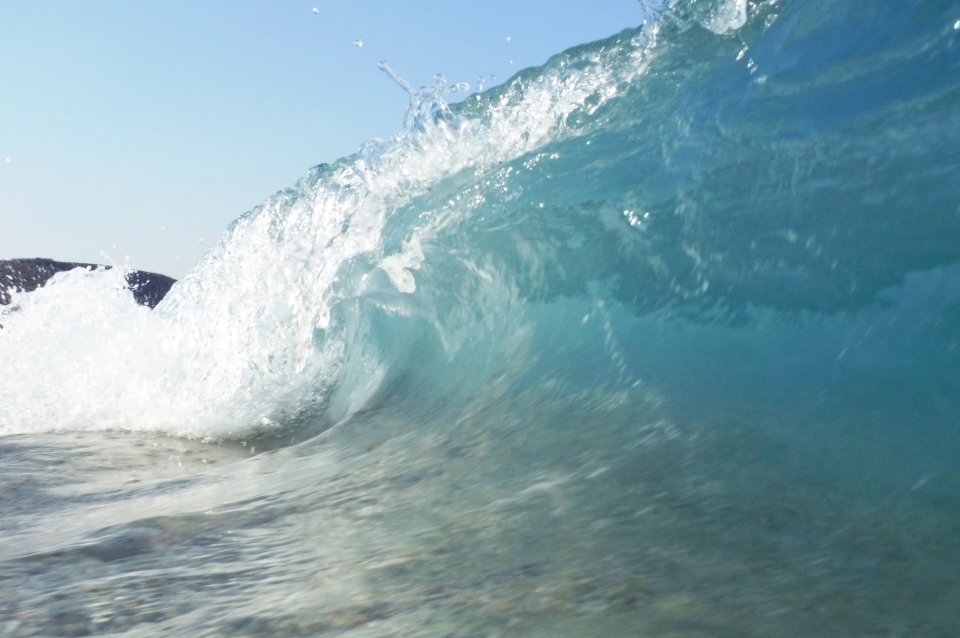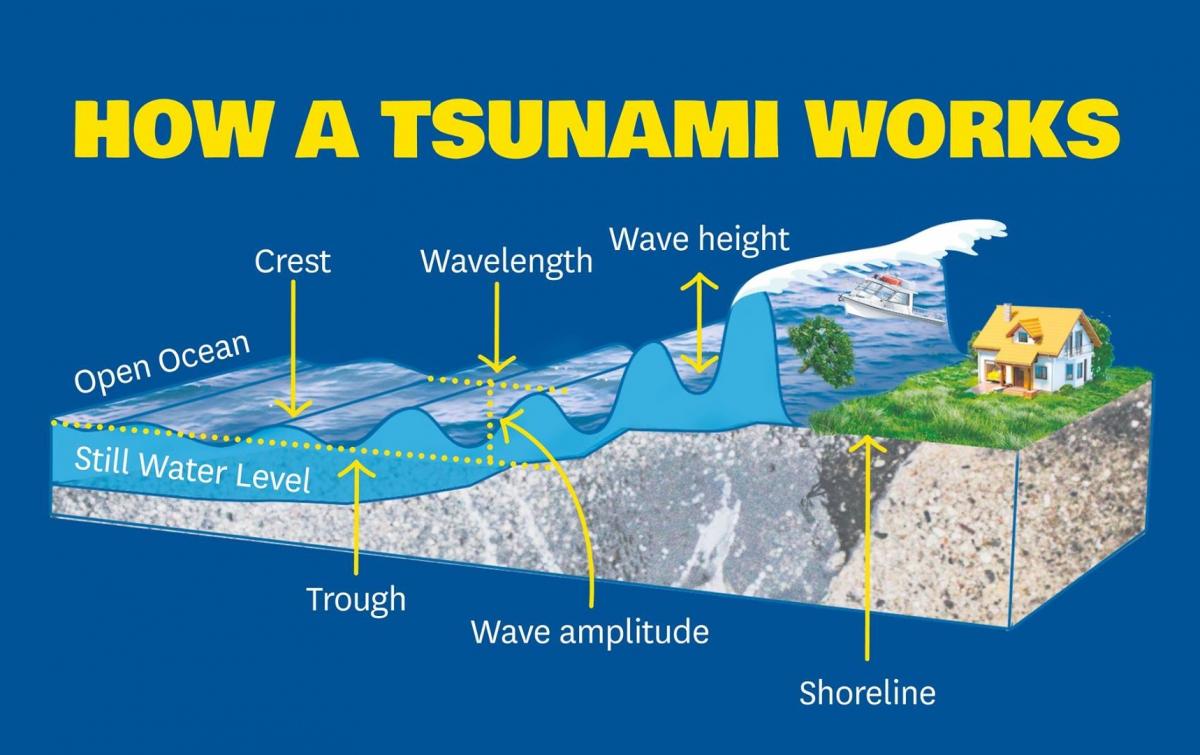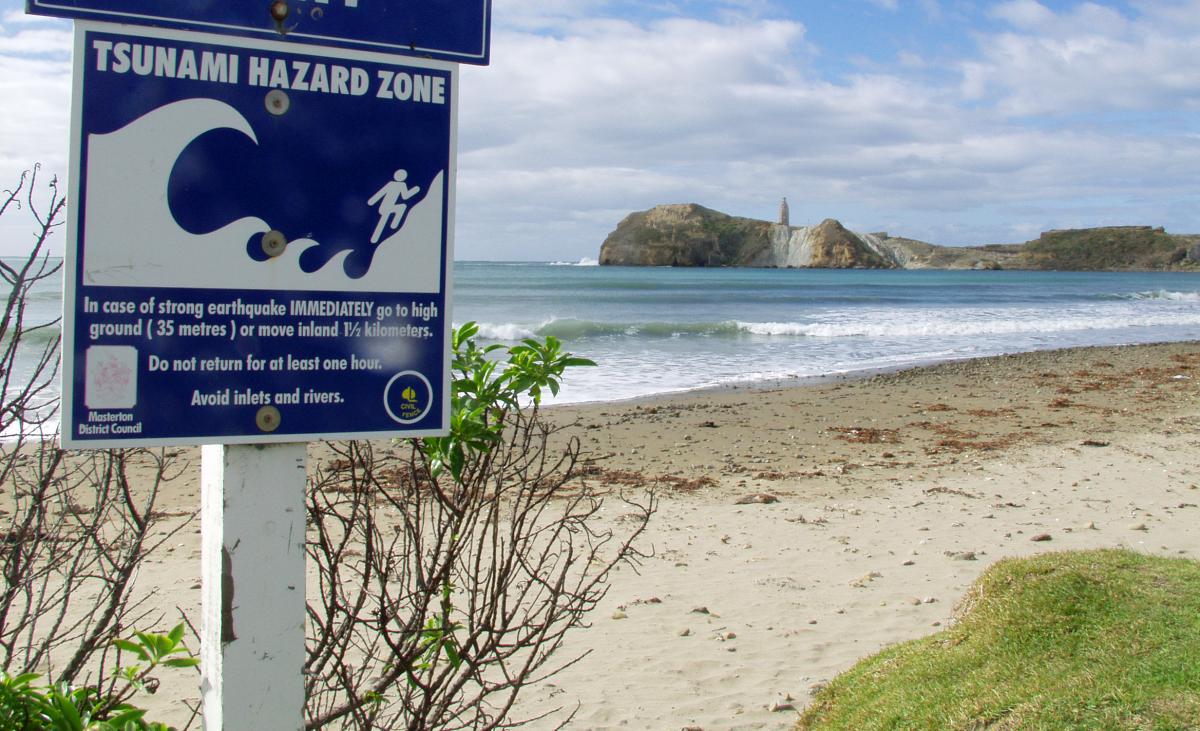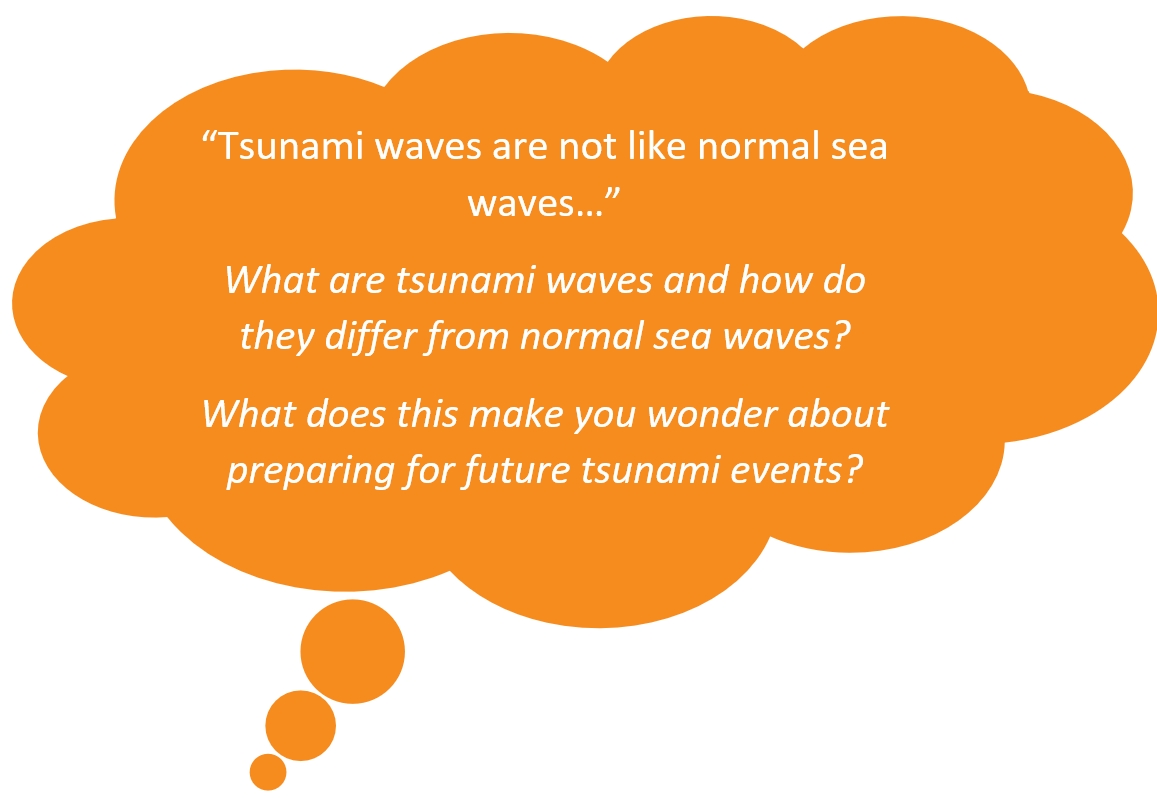You can contact LEARNZ, part of CORE Education, at:
Postal Address:
PO Box 13 678,
Christchurch 8141,
New Zealand

Tsunami is a Japanese word which means “harbour wave”.
A tsunami is a series of waves in the sea or in a lake caused by a movement on the sea or lake floor. Aotearoa is at risk from tsunami because it has a long, exposed coastline and sits on the ‘Pacific Ring of Fire’ where earthquakes and volcanoes are common.
Tsunami waves are not like normal undersea currents or sea waves because their wavelength is far longer. Rather than appearing as a breaking wave, a tsunami may instead look more like a rapidly rising tide. This is why tsunami are also sometimes called tidal waves, but they have no link to tidal cycles, so the term tsunami is used more often.
The most common cause of a tsunami is a shallow undersea earthquake that displaces the sea floor. Other triggers include:

Sudden changes to the seafloor raise the water level locally causing the ocean to flow away from the movement, creating waves. These waves spread outwards like ripples from a stone thrown into a pond.
Watch this animation of a tsunami from NOAA.
In the deep ocean, tsunami travel at the speed of a passenger jet (600–900 kilometres per hour), but they are usually less than half a metre high. They pass ships unnoticed. As they move into shallow water they slow down, the distance between wave crests lessens and the waves increase in height, sometimes to tens of metres.
Tsunami waves may come ashore as steep breaking walls of water, or as fast-rising water levels. Unlike normal waves that break and recede in a few seconds, tsunami waves rush in for many minutes, often reaching far inland areas along low-lying coasts. Tsunami waves can travel for many kilometres up rivers.

The seawater may recede a long way out, sometimes hundreds of metres, before coming back in as a tsunami. Tsunami are not just moving lumps on top of the ocean surface, but also include hollows. Sometimes the hollow reaches the coast first. When this happens, the ocean first draws down and sucks water away from coastlines. It then rushes back in with enormous speed and force as the lumps arrive.
 People who notice the receding water have as little as five minutes to flee inland to higher ground. Other signs of a tsunami are a sudden rise or fall in sea level and hearing loud and unusual noises from the sea.
People who notice the receding water have as little as five minutes to flee inland to higher ground. Other signs of a tsunami are a sudden rise or fall in sea level and hearing loud and unusual noises from the sea.
Some tsunami are turbulent, foaming walls of water filled with debris and sand that crash ashore and sweep inland. Others are just rapidly rising or falling water levels over minutes to an hour. Both are dangerous. Both can travel over land at speeds faster than a person can run.
Complete the Tsunami quiz >
Discover more about tsunami >